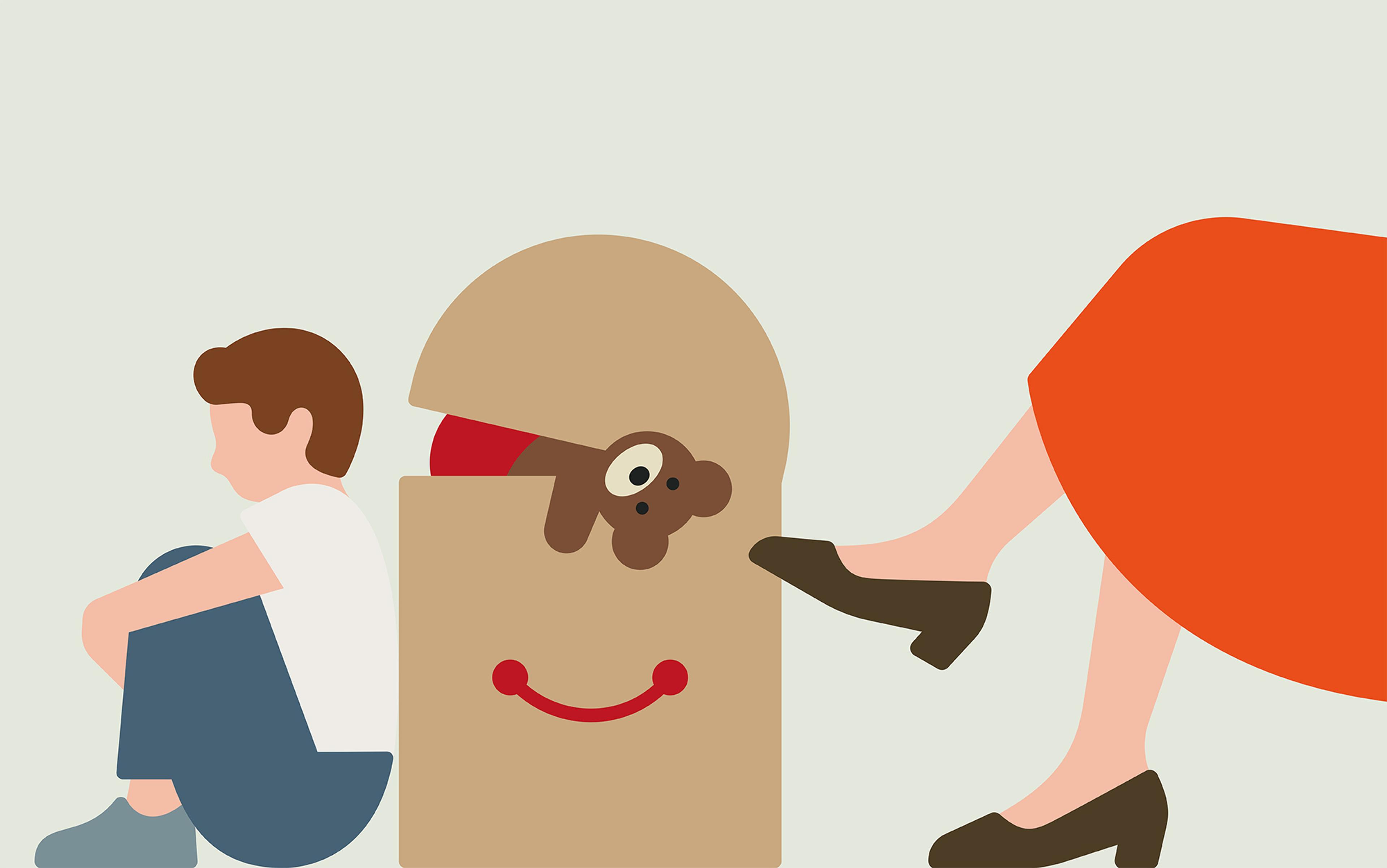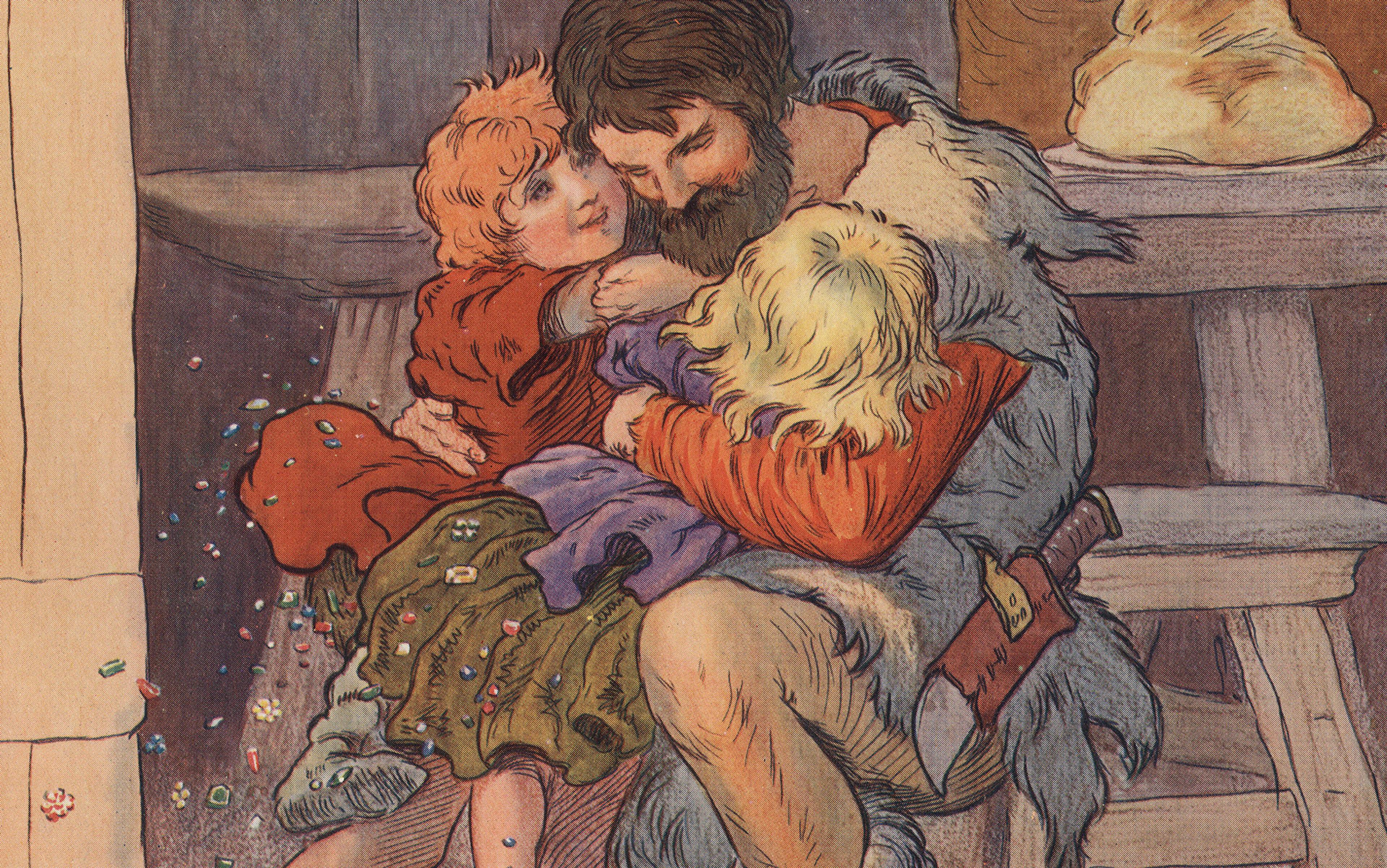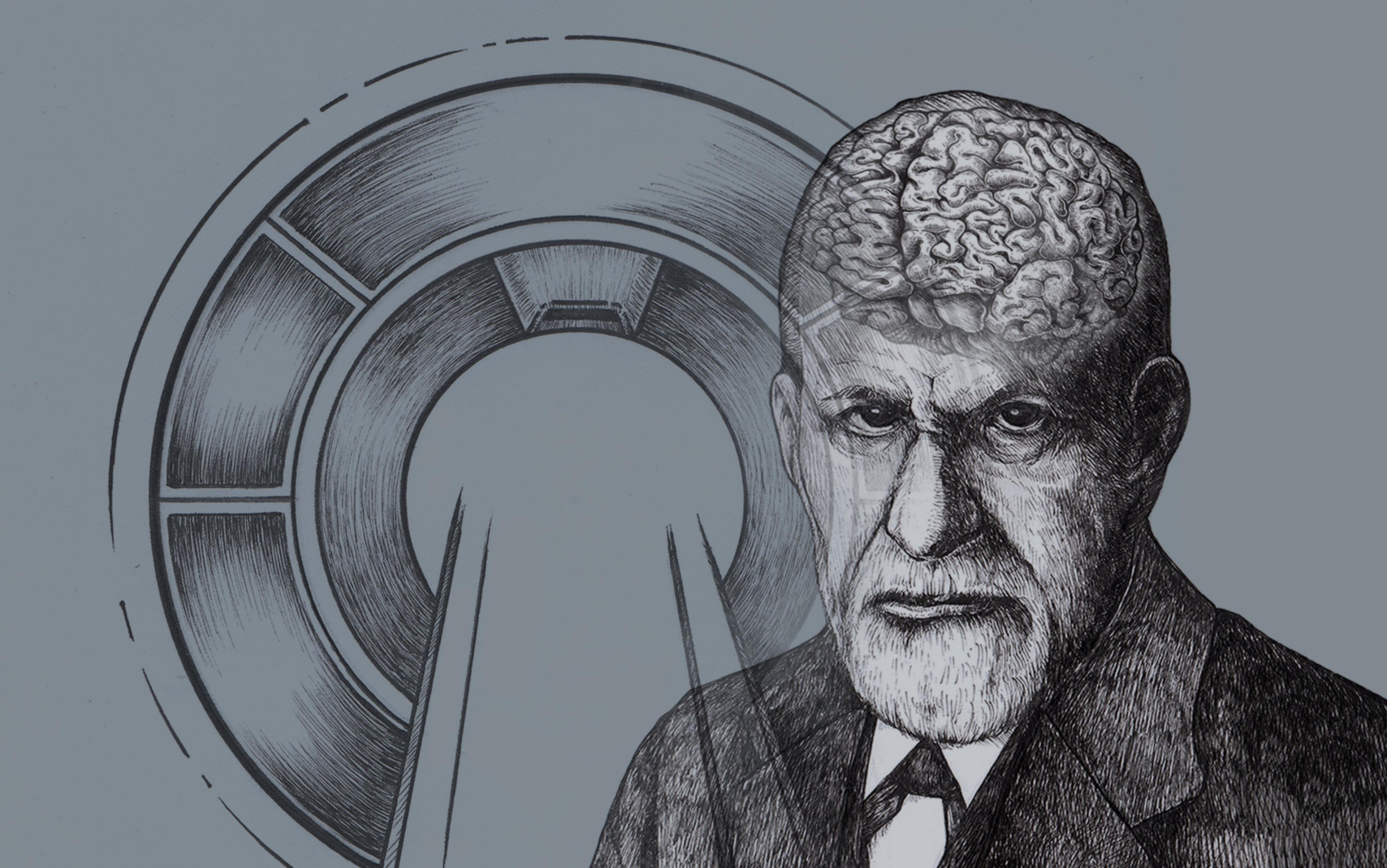January 2022 saw the death of Edna O’Shaughnessy, a leading child psychoanalyst who once called herself ‘Melanie Klein’s handmaiden’. O’Shaughnessy trained at the Tavistock Clinic and practised privately for many decades in north London, in 2015 publishing a collection of essays reflecting on her services to a number of clients. Three of these essays draw upon her analysis of an 11-year-old boy she names Leon.
The merest glance at Leon in their first encounter in what O’Shaughnessy called the ‘playroom’ told her that a daunting challenge lay ahead. ‘As [the parents] had made no mention of depression,’ she recalls, ‘I was not expecting the very depressed child who arrived for a first session: a crushed, lumpy boy who sat himself down in front of me on a small bench.’ Before long, O’Shaughnessy came to believe that Leon wasn’t just depressed; he lived in a world of lurid symbols. The cushions surrounding him on his seat, she reports, ‘are de-sexualised parents whom he holds apart and around himself’. In the door of the playroom, Leon is said to have discerned ‘a penis with testicles’, and in the patina of the floor he made out ‘a confused vagina and mouth’.
Narratives by Kleinian analysts, it is safe to say, are meant for fellow professionals, who would regard Leon’s grotesquerie as part of a day’s work. But after recently discovering O’Shaughnessy’s essays, I found myself less favourably disposed. It didn’t take me many pages to realise that, in fact, lumpy Leon was me. I recognised myself not from the phantasies ascribed to me but from the circumstances of my case and from snatches of conversation that O’Shaughnessy, too, found memorable.
My father had become professionally involved with the Tavistock, which in the 1980s was a hotbed of Kleinian analysts. In 1986, he signed me up with O’Shaughnessy, and I began what proved to be three years of private sessions – four days each week, around 40 weeks a year – in O’Shaughnessy’s Hampstead home.
Nothing, however, was going on with me that required almost daily psychoanalysis for months and years. To be sure, I was shy and sometimes reluctant to join in with new activities. But by no means was I depressed. Besides a nervousness at the prospect of starting secondary school, I was a contented child. And, significantly, my parents had disagreed as to whether intervention was even needed. ‘Mother,’ O’Shaughnessy writes, ‘was humbly dubious about this, insisting that Leon was just an ordinary boy, not academic, no trouble at all.’
O’Shaughnessy is at pains to emphasise that the setting in which she saw clients was a clinical one. If that had truly been the case, however, her process of diagnosing and treating the putative issues would have been much more rigorous. One would expect a genuine enquirer to ask more searching questions. Is this child distressed at all? If he is, does he need four hours a week of therapy? Do the trade-offs of taking him away from schoolwork and socialising outweigh the potential benefits of therapy? And even if all these stars align, is psychoanalysis the appropriate intervention?
What she made of my answers often struck me as ridiculous, and I grew increasingly willing to say so
But O’Shaughnessy, regarding me through the distorting lens of Kleinian theory, never doubted my need for her attention. The remedy? An extended period of psychoanalysis, of course. It’s a prescription that I’ve no doubt O’Shaughnessy wrote for all her clients, regardless of their diagnoses. Any adults among them could have chosen to make that investment of their time and money on their own terms – and would have been free to walk away should their common sense prevail – but those luxuries were not available to children.
In the early sessions, I joined in with O’Shaughnessy’s questioning, which often entailed her asking: ‘What are you thinking?’ What she made of my answers often struck me as ridiculous, and I grew increasingly willing to say so. As one of her essays recalls, I told her simply: ‘I hate your talking.’
As the analysis proceeded, I came to think of it as a form of detention. I grew increasingly uncomfortable in O’Shaughnessy’s company and began turning up to sessions late. By the final year, I was spending many hours doing my homework while sitting half-obscured behind a large toy box. At other times I escaped altogether into a bathroom next door, reading a book.
That behaviour could have been of interest to a psychologically astute enquirer. Though my mother had assessed me as ‘no trouble at all’, by the third year of analysis I was hiding from O’Shaughnessy in a loo. Had something terrible happened at home or school? Or, perhaps, could the analysis itself have been causing more problems than it was solving?
It’s a well-worn criticism of psychoanalysis that it rests on unfalsifiable beliefs – that there is no way to prove or disprove the theories on which it is built and the conclusions it reaches – and is therefore not a scientific enterprise. But in an essay titled ‘What Is a Clinical Fact?’ (1994), O’Shaughnessy insists that the objectivity of psychoanalysis is vouchsafed by the analyst undertaking ‘supervision and discussions with colleagues’. Those colleagues, however, already share the analyst’s doctrine, and what they discuss on any given day will consist entirely of what she chooses to tell them in the shared idiom. The whole company might as well be a circle of astrologers.
The closed nature of this arrangement is evident in a memorial note about O’Shaughnessy published in 2022 by the German psychoanalyst Gisela Klinckwort. She describes O’Shaughnessy leading a 2013 conference session that included discussion of her time with Leon. Klinckwort observes: ‘It was very impressive to experience how Red observed the child’s behaviour and speech, how deeply she understood the child Leon and reached him with simple words.’ ‘Red’, I learned, was O’Shaughnessy’s nickname among her colleagues, and Klinckwort, I suspect, accurately captures the cosiness of the ‘supervision and discussions’ she had with them. But what Klinckwort could not know is that O’Shaughnessy’s account of our relationship is almost entirely the latter’s own invention.
Reading O’Shaughnessy’s essays as an adult, I see how she was trying to fit me into her theoretical framework – sometimes by revising the theory to match our interactions. This is best shown in her entanglements with Sigmund Freud’s Oedipus complex. Freud claimed that all boys experience a developmental phase in which they desire their mother and see their father as a sexual rival. But, as O’Shaughnessy identifies it in the essay ‘The Invisible Oedipus Complex’ (1989), a problem threatens: what happens when one’s client exhibits ‘little or even no Oedipal material’? She describes how the Austrian psychoanalyst Heinz Kohut suggests setting aside the Oedipus complex altogether. But this won’t do: it risks a major departure from Freud’s key teachings. Fortunately though, O’Shaughnessy has a breakthrough with the help of Leon. Drawing on his case, she posits that clients can have an ‘invisible’ Oedipus complex – with its invisibility taken to show not that it is irrelevant to the client, but so central and intense as to be the dominant force acting on his mental life. With this, O’Shaughnessy has achieved quite a feat: for psychoanalysts wondering whether the Oedipus complex is universal as Freud claimed, they can reassure themselves that either the presence or the absence of ‘Oedipal material’ is proof of its existence. The theory stands, and there’s also a promising new avenue of therapeutic work to explore. All roads lead to analysis.
Her weighty sense of her own importance led her to strip my life of any meaning beyond analysis
With the criteria for ‘Oedipal material’ expanded to include both visible and invisible signs, O’Shaughnessy starts detecting it in almost every interaction with Leon. One fact she makes much of is that, for the first eight months of sessions, I chose to sit on a small bench between two cushions. If memory serves, I sat there because the bench was near the door and was comfortable enough for 50 minutes. But O’Shaughnessy had steeled herself against such mundane considerations. ‘Leon’s cushions,’ she is convinced, ‘are de-sexualised parents whom he holds apart and around himself – the comfortable remainders from which frightening components have been expelled onto the floor and the door.’
It is worthwhile to ask how O’Shaughnessy could have arrived at this inference and its embellishments – the penis, testicles, mouth and vagina that are said to have hovered before Leon like Macbeth’s dagger. At no point is she clear that I told her I could see those things. I’d be surprised if I had, given that ‘mouth’ was the only one of those words in my vocabulary at 11. What we have here are projections, not from Leon’s unconscious but from the ramshackle warehouse of Kleinian theory.
One especially sinister dimension to the time I spent with O’Shaughnessy was the insidious way in which she sought to position herself between me and my parents. It takes a considerable amount of self-confidence to attempt such a thing, but in her case it was licenced by the cardinal psychoanalytic concept of transference. In the transference, the client is thought to imbue the therapist with unresolved emotions from childhood. Accordingly, O’Shaughnessy alleges that I often saw her as my mother. She writes that Leon wanted her ‘to be drawn away from father, come closer around [Leon] and coax him with questions, not only when he was anxious and needed me to, but also when he was hostile and chose not to relate to me.’ These opposed situations, my supposedly craving closeness and my wish for distance, are both presented as evidence to support her preferred course of action.
O’Shaughnessy’s weighty sense of her own importance led her to strip my life of any meaning beyond analysis, with her declaring that ‘the gap between sessions or at weekends did not exist for [Leon]’. In one instance, she describes me as having been so shocked by the prospect of a weekend away from her that I ‘kicked violently in [her] direction and made a rude gesture of “up you”.’ As she glosses the outburst, this was really an attack on ‘the pregnant mother’, expecting another child who would take attention away from me. But my weekends were important to me precisely because they counted as time away from this monomaniac. And my rude gesture, though I’m not proud of it, was addressed to her.
Her relationship with me might be regarded as an instance of what psychoanalysts call countertransference, but it is better viewed as a delusion of relevance. To underscore my lack of interest in the outside world, O’Shaughnessy declares that I ‘did not try at home or at school’. But I did, as one could even glean from reading her essays, which contain references to my doing homework in the sessions. Despite this, she insisted on seeing it only as a device to get her attention rather than what it was: my attempt to anchor myself in the world outside her sessions, which was vastly more important to me than what she imagined occurring in her playroom.
If I craved O’Shaughnessy’s attention, why did the sessions come to an end? She concedes that I unilaterally ended the analysis at age 13, but she finds the fact hard to reconcile with her belief that I had no meaningful life beyond her. She leaps into a convoluted story of a child desperate to continue therapy. In what was by her count the 15th session from last, Leon brings a carton of fruit juice on which the words ‘fifteen free extra’ are printed in capital letters. He is said to be so anxious about losing his therapist and desperate for something more (something ‘extra’) from her that he takes these feelings out on the carton. Having sucked at its final drops, Leon hurls it across the room into the bin before collapsing into an implausible nap: ‘He transmits to me absolutely rending pain and anxiety. And suddenly he falls asleep – it is so unendurable.’ If this isn’t altogether a confabulation on O’Shaughnessy’s part, its grain of truth is that I was terminally exasperated and ready to throw things.
The only point on which O’Shaughnessy and I agree is how little the psychoanalysis accomplished. In ‘What Is a Clinical Fact?’, she comments on one session:
Now, writing this paper, I see my hopelessness when faced by Leon’s defended, split state, and feeling of just having to endure it, as very likely coming from my sense of failure as an analyst with Leon – so limited [was] my therapeutic result.
But having noticed the poor outcome, she cares only about how it bears upon her own feeling of hopelessness and the fortitude she needed to endure it. She does not consider it in relation to me, who spent such a long, unpleasant time with her. More generally, she is almost entirely incurious about what I might have got out of those dismal years. Her essays provide no indication of what she wanted me to achieve in the sessions, and the question of whether I managed to pass through the invisible Oedipus complex went unanswered in her paper on that topic.
O’Shaughnessy’s only expression of curiosity about me occurs in a brief section of a paper titled ‘On Gratitude’ (2008), in which she offers a fuller description of our very first session. She recalls my returning at the end to say: ‘Thanks. Thanks. Thank you.’ She asks: ‘What was Leon thanking me for?’ The answer is simple: I was a polite 11-year-old brought up to thank adults in authority. But O’Shaughnessy preferred, as always, to concoct a self-serving explanation: ‘I think it was for addressing his psychic reality, for attention and interpretation.’ I was, she writes:
grateful too that in this new circumstance of a psychoanalytic session, when he let me see his depression, fear, pleas to be softly pitied, I could … know his feelings and speak plainly about them. That is to say, I think he was grateful to me for doing my job.
None of that is true. A better question – one that might conceivably have dented her formidable armour – would have been why I never thanked her again.
She could perceive me only as a device to play out already fixed ideas
Reading O’Shaughnessy’s account of our time together all these years later, I am struck by how much she disliked me. She several times describes what I say and do as being either nasty or cruel. I am characterised as self-pitying, manipulative, and (oddly) lumpy. This is speculation on my part, but one reason for her resentment seems to be that she was unused to criticism. The memorials written by her colleagues after her death are naturally affectionate, but they also indicate that she did not receive much in the way of dissent or resistance. And yet there was I, from the age of 11 offering her both, with increasing frequency, over the course of three years. O’Shaughnessy is very selective about how much of this to reveal in her essays. But she of course knew it, and evidentially didn’t appreciate it.
How do I feel about having come across a wild misrepresentation of my early self? I spend a part of my professional life reading journal articles. Meeting O’Shaughnessy’s description of me in three of them was uniquely surprising. The surprise gradually gave way to a sense of violation, stemming from the analyst’s insistent sense that she owned part of my life and could share it with others as she pleased. When writing this piece, I found a video interview with her recorded sometime around 2015. In it she makes casual mention of ‘my young Leon’. That proprietary comment – made over a quarter of a century after she last saw me – feels to me now like an attempted kidnapping. In both its substance and its effect, it captures the essence of our relationship.
O’Shaughnessy’s essays illustrate human susceptibility to indoctrination and the potential for dogma to override common-sense ideas about what is reasonable in relationships with other people – including, of course, children. They also illustrate the dangerous tendency of inward-looking and self-regulating communities to error and harm.
The belief system of Melanie Klein, who taught that ‘paranoid-schizoid’ infants at the breast aim to bite away the faeces, the other babies, and the paternal penis supposed to lie within, is more than usually apt to yield therapeutic craziness. Yet the problem goes beyond any one set of tenets. Successful psychotherapy requires, above all else, that the therapist attune herself to the other person in the room. Any set of presuppositions is a potential obstacle to that task. If O’Shaughnessy wasted part of my childhood for three frustrating years, it wasn’t because she meant to do so, but because she could perceive me only as a device to play out already fixed ideas. In some dim way, I grasped this point from the outset, fought back, and so was spared more permanent harm.






